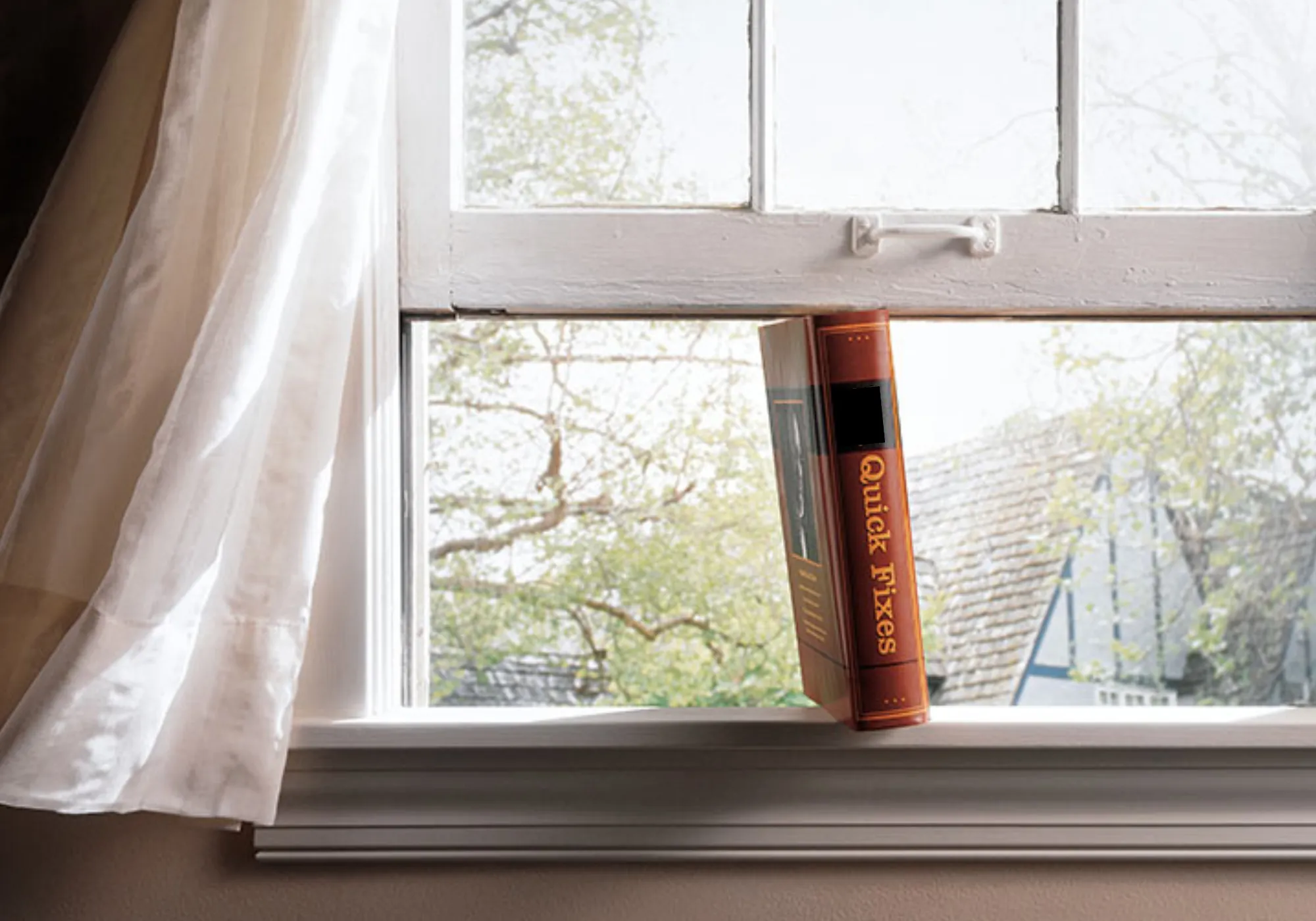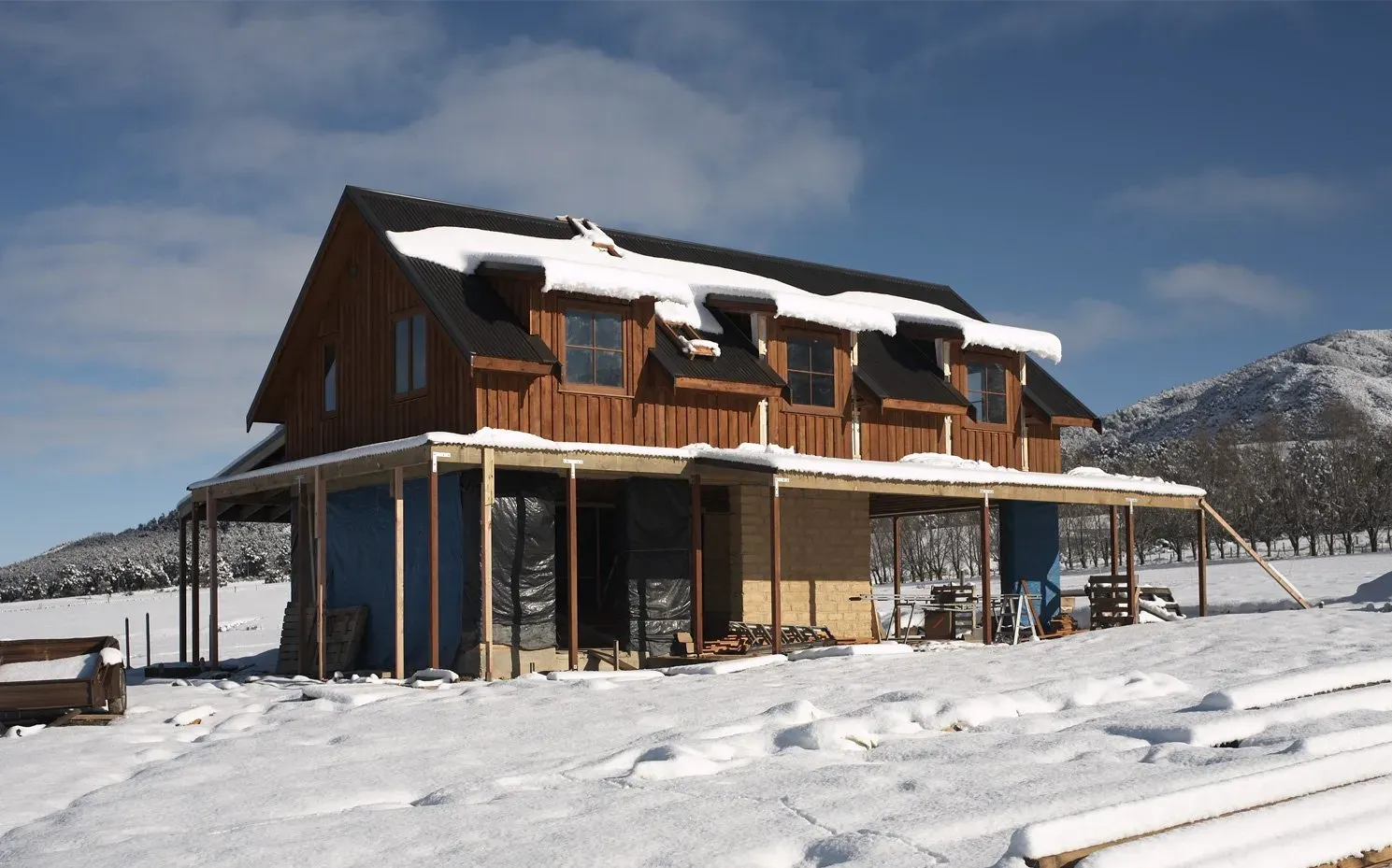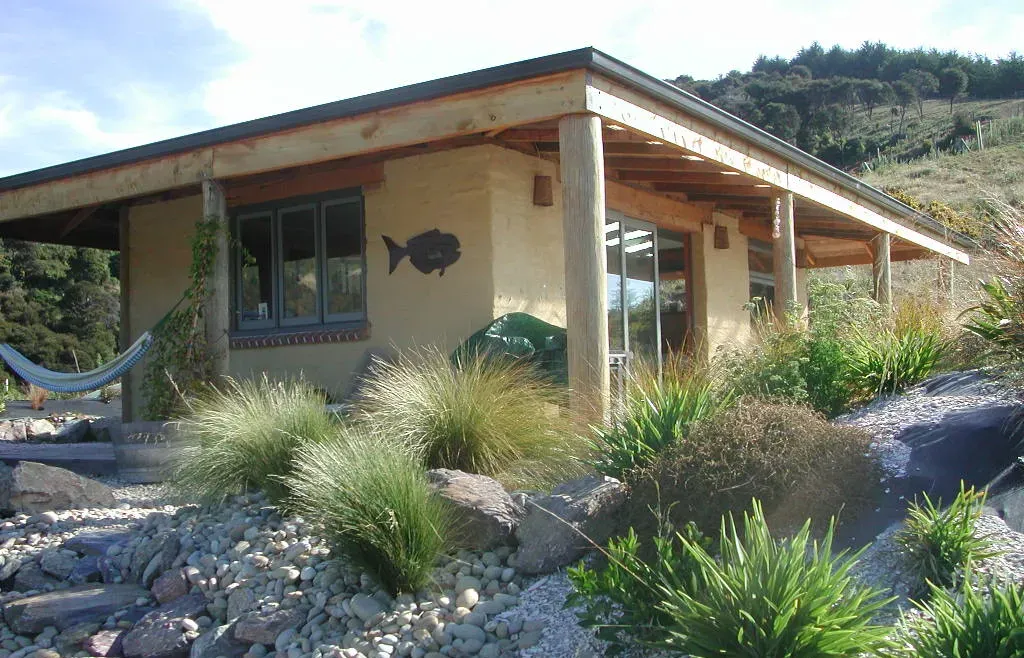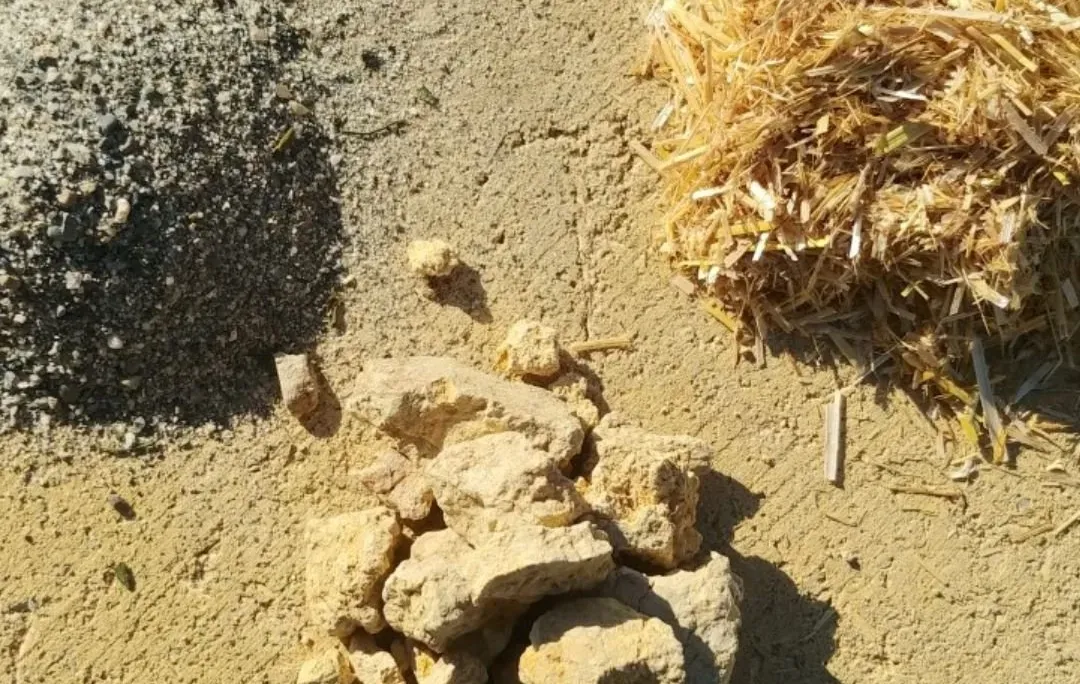Air Tightness vs. Breathability: Striking the Right Balance

When I was at Architecture School in Switzerland, one of my professors bashed natural building, saying breathable homes can’t be airtight and thus are bad for the environment. He confused breathability with air tightness. At the time (1993) I couldn’t articulate why he was wrong, and to this day I see the need to educate people that these things are not mutually exclusive. In fact, they should go hand in hand.
When it comes to your home, comfort and air quality are a top priority. Achieving the sweet spot between air tightness and breathability is not just a nice-to-have, it's essential for a healthy, energy-efficient living space.
Here's what you need to know to get started:
- Understanding the balance between air tightness and breathability is crucial for maintaining a comfortable, energy-efficient home.
- Insulation is key to warmth and efficiency, but without proper breathability, it can lead to moisture problems.
- Identifying and sealing air leaks boosts energy savings and enhances indoor air quality.
- Choosing the right materials and techniques can improve the longevity and performance of your home's insulation.
- Regular assessments of your home's air quality and insulation effectiveness are important for ongoing comfort and health.
Why Your Home Needs a Breathable yet Airtight Barrier
Imagine living in a bubble—completely sealed off from the outside world. It might sound cozy at first, but soon, the air would become stale and damp. Your home works much the same way. It needs to be tight enough to keep the heat in and the elements out, while still letting the house breathe to prevent moisture buildup and ensure fresh air circulation.
The Role of Insulation in Home Comfort and Efficiency
Insulation is like a warm hug for your house. It wraps your living space in a layer of protection that holds in the heat during winter and keeps out the heat during summer. But it's not just about temperature; insulation also plays a role in:
- Reducing energy costs by keeping your heating and cooling system from working overtime.
- Keeping your home warm and dry, which is essential.
- Lowering outside noise levels, making your home a peaceful sanctuary.
- Maintaining a consistent indoor climate, so every room feels just right.
- Increasing the overall value of your home with improved energy efficiency.
With the right insulation, you'll not only save money on your energy bills, but you'll also enjoy a more comfortable and healthier home environment.
Understanding Breathability in Building Materials
Let's talk about breathability. No, not the kind you do with your lungs—this is all about your house's ability to let moisture escape and regulate indoor humidity levels. When a home can't breathe, moisture gets trapped inside walls and ceilings, which can lead to mold, rot, and a whole host of other issues. Here's what makes a material "breathable":
- Vapor permeability: This is a fancy term for how well a material allows moisture to pass through.
- Hygroscopic properties: Some materials can absorb and release moisture, helping to regulate humidity levels.
- Micro-porosity: Tiny pores in a material can let water vapor out without letting liquid water in.
- Capillarity: The ability of a material to wick moisture away and distribute it for evaporation.
Choosing materials with these characteristics for your home's construction and insulation is like picking breathable workout gear—it helps manage moisture and keeps your home's environment in top shape.
The Science Behind Air Tightness
Now, let's look at air tightness. We're not just talking about plugging up holes with caulk and calling it a day. True air tightness is about creating a continuous barrier that stops unwanted air flow in and out of your home. Here's the science part:
- Air tightness minimizes the loss of heated or cooled air, making your home more energy-efficient.
- It helps maintain indoor air quality by preventing outdoor pollutants and allergens from sneaking in.
- By controlling moisture ingress, it protects the structural integrity of your home.
- A well-sealed home is less prone to drafts, making for a more comfortable living space.
Achieving air tightness is a bit like putting the right seal on a vacuum flask; it keeps the inside temperature just how you want it, no matter what's happening outside. And when you pair that with the right breathability, you've got a home that's not only cozy and efficient but also healthy and durable.
How to Assess Your Home's Insulation Needs
Before you can tackle insulation, you need to know what you're working with. Assessing your home's insulation needs is a bit like a detective figuring out where the heat is sneaking out. You'll want to check the attic, walls, and floors — especially at material junctions. These are the hot spots where heat tends to escape. Pay attention to the age of your home, the existing insulation, and whether there are any drafts.
Identifying Common Air Leaks
Common air leaks are the thieves of your home's warmth and energy efficiency. They often show up around windows, doors, and even electrical outlets. To catch these culprits:
- Look for gaps and cracks around window and door frames.
- Feel for drafts on a windy day by running your hand around common leak sites.
- Inspect the attic and basement, where leaks often hide out of sight.
- Check for any signs of daylight or noticeable airflow in closed spaces.
- Use incense sticks or a smoke pen to detect air movement that indicates leaks.
- Pay a professional to do thermal imaging or a blower door test.
Once you've found the leaks, you're ready to plan how to fix them.
The Importance of Vapor Permeability
Vapor permeability is like your home's ability to breathe through its skin. It's all about managing moisture so that your house doesn't sweat like a gym sock. Here's why it matters:
"A home with good vapor permeability allows moisture to escape, preventing condensation and mold growth, which are big no-nos for your health and your home's structure."
Materials with high vapor permeability, like certain types of insulation and house wraps, and certain wall finishes such as earthen plaster, work to keep your home breathable, and indoor humidity levels regulated.
> Read more about the role of Earthen Plasters for Breathable Homes here.
Strategies for Improving Air Tightness
Improving air tightness is essential, especially in older homes. Here's how to tighten up your home:
- Seal gaps and cracks with caulk or expandable foam for a quick fix.
- Install weatherstripping around doors and windows to stop drafts in their tracks.
- Consider adding insulation to your attic and walls to beef up your home's thermal barrier.
- For a more comprehensive solution, look into breathable house wraps.
- Don't forget about your ductwork—sealing those seams can have a big impact.
Remember, an air tighter home isn't just about staying warm; it's about creating a more energy-efficient and comfortable living space for you and your family.
Selecting the Right Insulation Material
Choosing insulation is like picking the best winter coat for your house. You want something that keeps the warmth in, lets the moisture out, and doesn't break the bank. Here are the key factors to consider:
- R-Value: This measures how well the material resists heat flow. The higher the R-value, the better the insulation.
- Material: Options range from fiberglass and foam to natural fibers like wool, cellulose and hemp. Each has its pros and cons in terms of breathability, environmental impact, and cost. I encourage you to do your homework. My preferred insulation is wool.
- Thickness: Sometimes, you can improve insulation simply by increasing the thickness of the wall. Just make sure your walls can handle the extra bulk. An interesting natural building option here is LEM.
- Vapor Permeability: Remember, you want moisture to escape, so look for materials that allow your home to breathe. Use breathable building wrap and hygroscopic materials for your insulation and wall finishes.
- Environmental Impact: Consider eco-friendly options that reduce your carbon footprint and are sustainable in the long run.
Maintaining the Perfect Climate at Home
There are different strategies to keeping your home’s climate just right. Some include controlled ventilation systems, others rely on good ventilation habits by the occupant’s. Whichever route you choose, it is advisable to also consider “passive” elements, such as naturally moisture-regulating building materials like wool and earth, and “passive” heating making use of solar gain and thermal mass.
The Balance of Controlled Ventilation and Insulation
Controlled ventilation is the sidekick to your home's insulation, especially if you live in a place with air pollution, or big temperature fluctuations that make heating and cooling a necessity. It's all about deliberately bringing in fresh air and getting rid of the stale while keeping indoor temperatures even.
There are different approaches to smart ventilation:
- Mechanical Ventilation: Systems like HRVs (Heat Recovery Ventilators) or ERVs (Energy Recovery Ventilators) can help by exchanging indoor and outdoor air without losing heat or coolness. They are dependent on an energy supply, and cost money to run.
- Natural Ventilation: Simple practices like opening windows strategically for short and sharp cross-ventilation can improve air quality without affecting your home's temperature too much. This strategy is dependent on the occupant's behaviour and is free.
Combine insulation with smart ventilation for the best results, and enjoy thermal comfort, fresh air, and a healthy living environment, all while improving the energy-efficiency of your home.
Making Use of Natural Air Circulation
Apart from preventing the build-up of humidity, ventilation also provides us with essential air to breathe inside our home. Several air changes per hour are recommended in enclosed spaces. Natural air circulation is the simplest way to refresh your home's environment without any fancy equipment.
Here's how:
- Open windows across different rooms to create a cross breeze that carries fresh air through your home.
- Use ceiling fans to their full potential; they're not just for hot days but can also help move air in cooler months.
- When designing a new home, plan in a good ventilation strategy that responds to your local climate.
- Plant trees strategically around your home to funnel breezes in during the summer and block cold winds in the winter.
- Install vents or operable skylights in higher areas to let warm, stale air escape naturally.
- Install humidity-regulating interior finishes such as earthen plasters or earthen feature walls. They have an unmatched ability to regulate humidity and cleanse indoor air.
By taking advantage of natural air circulation, you'll keep your home fresh without a big hit to your energy bill.
Installing the Right Ventilation for Your Home
Whether you're building new or retrofitting, finding the right ventilation system can make all the difference. Let's walk through the mechanized options and how to select the best one for your home.
Types of Ventilation Systems Explained
From simple exhaust fans to sophisticated whole-home systems, there's a range of options to keep your air fresh:
- Exhaust Ventilation Systems: These work by depressurizing your home, pulling outside air in through vents and expelling indoor air.
- Supply Ventilation Systems: These pressurize your home, bringing in fresh air and forcing out the old, stale air.
- Balance Ventilation Systems: These include both exhaust and supply fans, balancing the air pressure while exchanging indoor and outdoor air.
- Energy Recovery Ventilation (ERV) and Heat Recovery Ventilation (HRV) Systems: These provide a controlled way of ventilating a home while minimizing energy loss by transferring heat and moisture between incoming and outgoing airstreams.
Each system has its strengths, and the right choice depends on your climate, home design, and personal preferences.
Determining the Best Ventilation Strategy for Your Household
Choosing the best ventilation strategy for your home requires a good look at your home's layout, your family's habits, and the local climate. Here's what to consider:
- Size and layout of your home: Larger homes or those with complex layouts may need more robust systems.
- Local climate: Homes in humid climates might benefit from ERVs, while those in colder regions might prefer HRVs.
- Air quality needs: If allergies or asthma are concerns, systems with built-in filtration might be the way to go.
- Energy efficiency goals: If reducing your carbon footprint is a priority, consider systems that recover heat or moisture.
- Budget: Balance your upfront investment with potential long-term energy savings.
Professional Installation vs. DIY Solutions
Here's a quick scoop on professional installation versus DIY:
- Professional Installation: Pros bring experience and knowledge, ensuring your system is installed correctly and efficiently. They can also help with complex calculations and ductwork design.
- DIY Solutions: For the handier among us, DIY can be a cost-effective option. However, it's important to have a solid understanding of your system and local building codes.
- Hybrid Approach: Sometimes, you can do some of the work yourself and then bring in a pro for the more technical aspects.
- “Passive” team players: Earthen indoor features will support any ventilation system you choose. They are easy for you to install DIY with a bit of guidance.
Whether you choose to go pro or DIY, the key is to ensure your system is installed correctly for optimal performance and safety.
FAQs About Air Tightness and Breathability
- What is the difference between air tightness and breathability?
- Air tightness refers to the ability of a building to prevent unwanted air leakage in or out, while breathability is the ability of building materials to allow moisture vapor to pass through, preventing condensation and mold growth.
- Why is it important to balance air tightness and breathability in my home?
- Balancing these two factors is crucial to ensure energy efficiency, prevent structural damage from moisture, and maintain a healthy indoor air quality.
- Can a home be too airtight?
- Yes, without proper ventilation, a home that is too airtight can trap moisture and pollutants indoors, leading to poor air quality and health problems.
- What are some signs that my home has poor breathability?
- Signs include condensation on windows, musty odors, peeling paint, or visible mold growth. These can indicate that moisture is getting trapped inside your home.
- Do I need a professional to assess my home's air tightness and breathability?
- While there are DIY methods for assessing these factors, a professional can provide a more comprehensive evaluation and suggest the best solutions for your specific situation.
- What kind of ventilation system should I use for a balanced indoor climate?
- The best system for your home will depend on its size, design, your climate, and personal preferences. Common systems include exhaust, supply, balanced, ERV, and HRV systems. Or you can commit to good manual ventilation habits.
- What kind of materials are breathable? A few examples include: Timber, cellulose, breathable building wraps, earth, lime, sheeps wool, hemp, straw. For a more in-depth discussion of breathability, you can check out this livestream. You are looking for materials with low water vapour resistance.
The goal is to create a comfortable, healthy, and energy-efficient home. By focusing on air tightness and breathability, you're investing in the long-term well-being of your living space and those who inhabit it. Don't be afraid to reach out to professionals for advice or to use the tools and techniques available to assess and improve your home's air quality.







